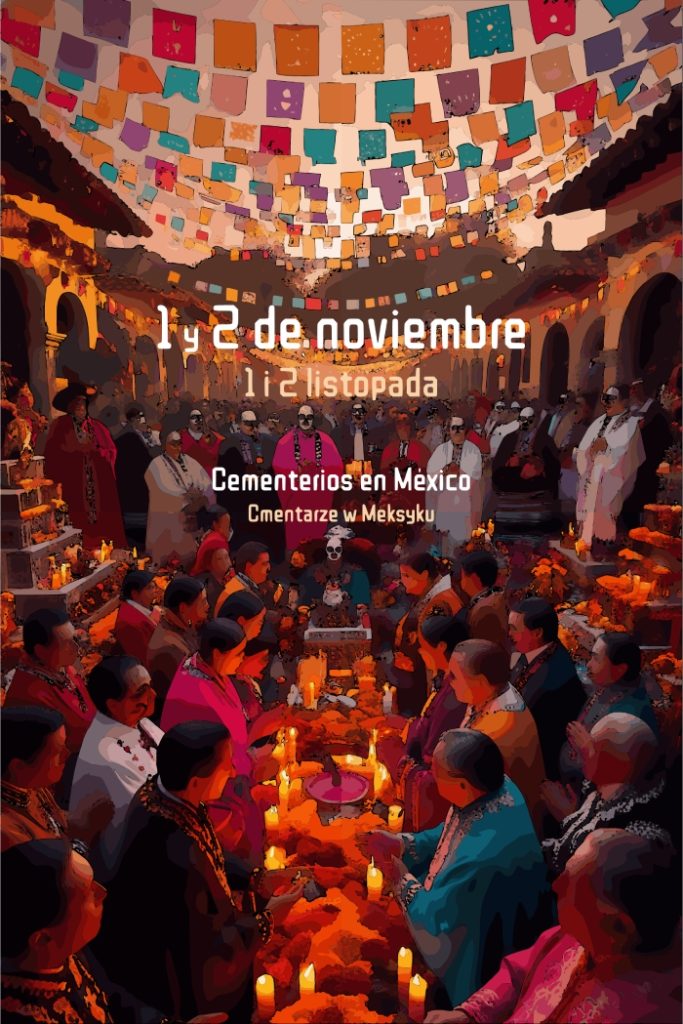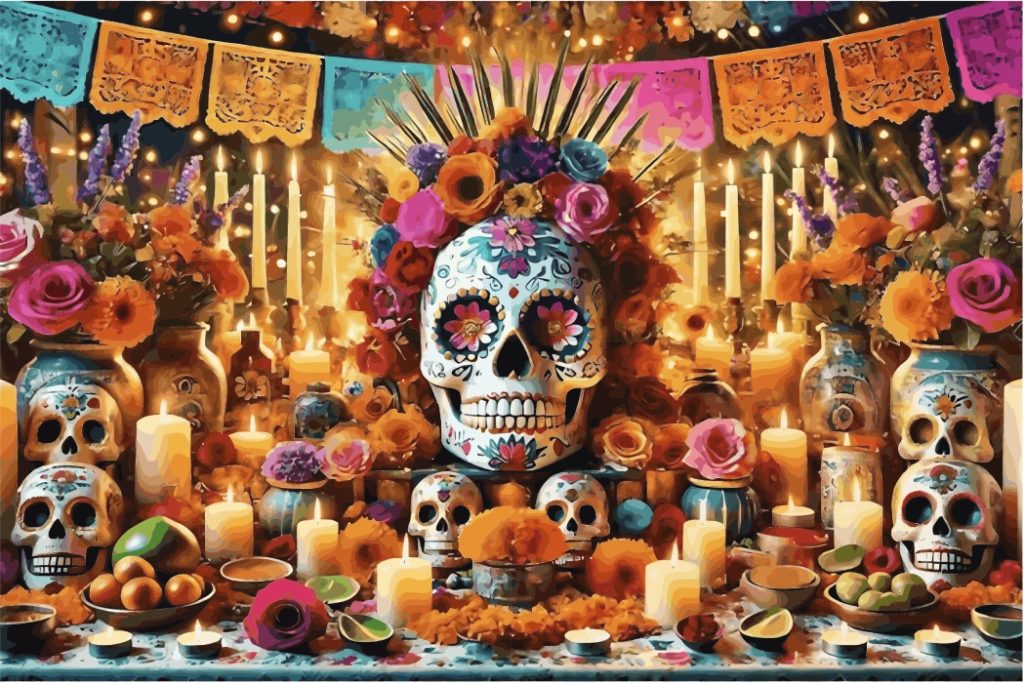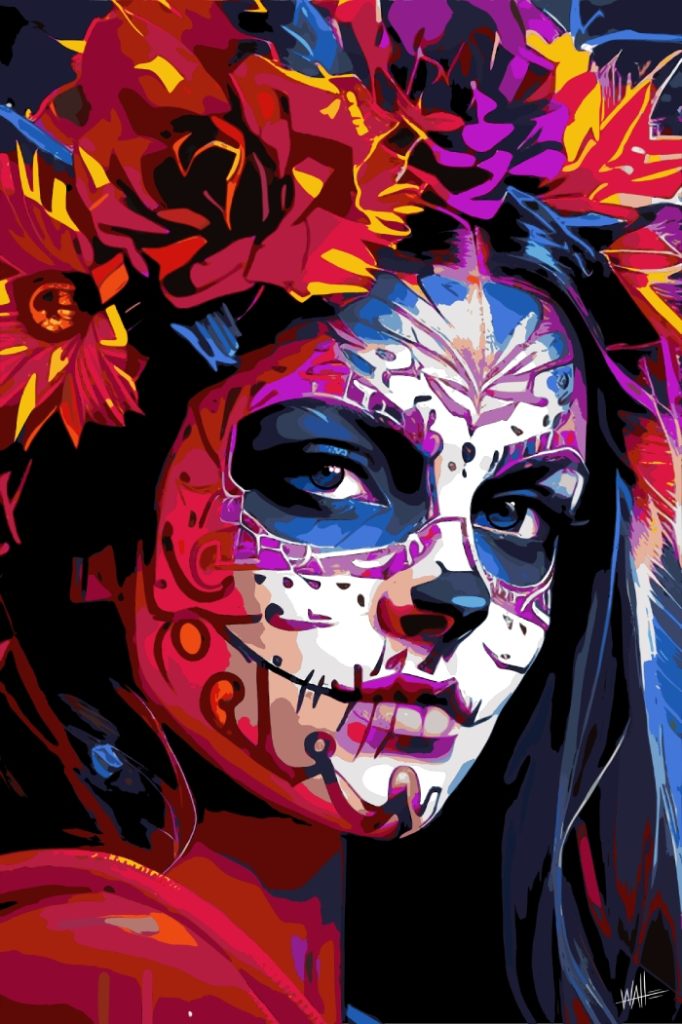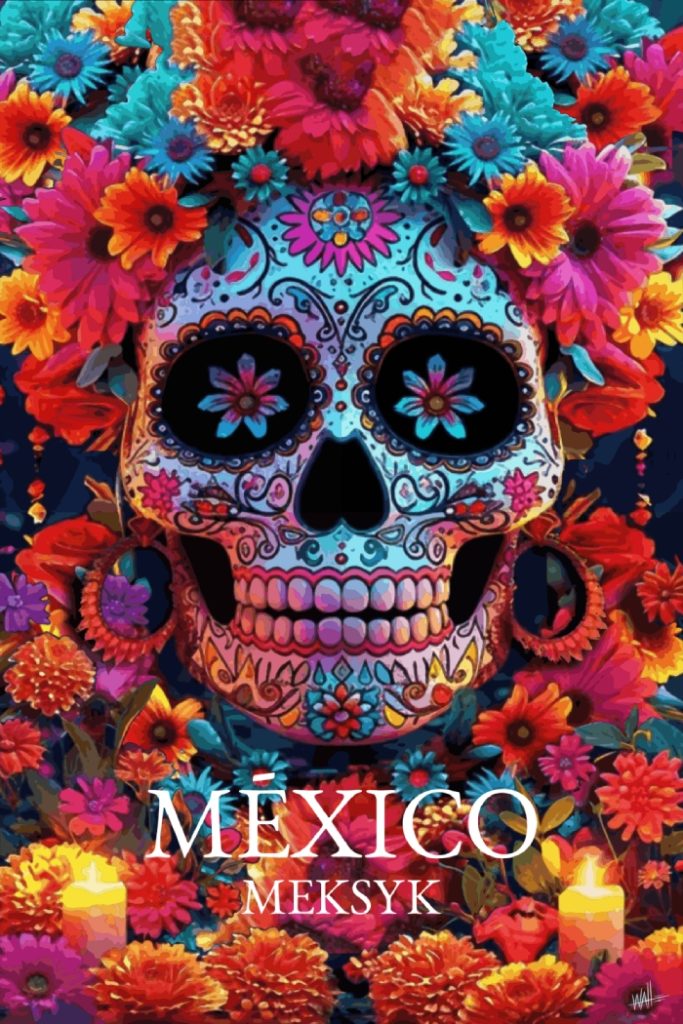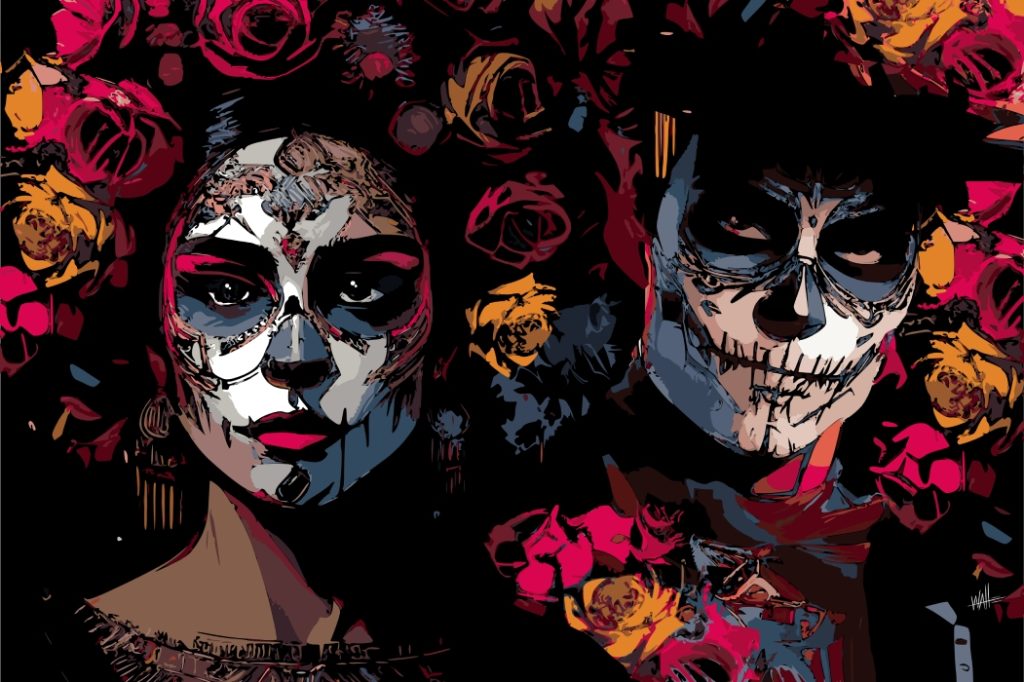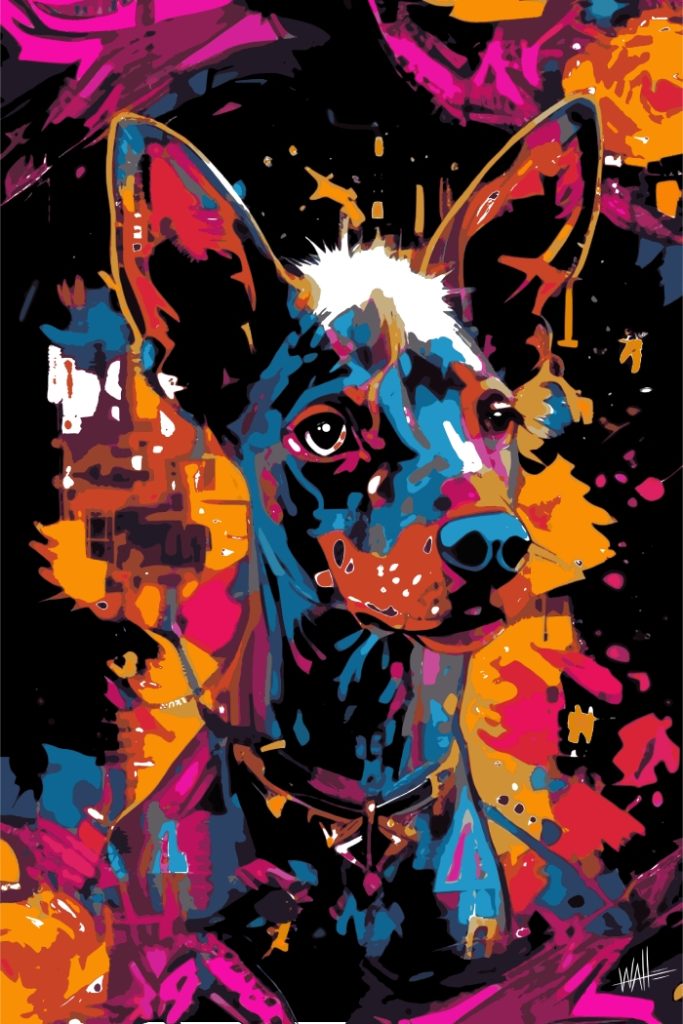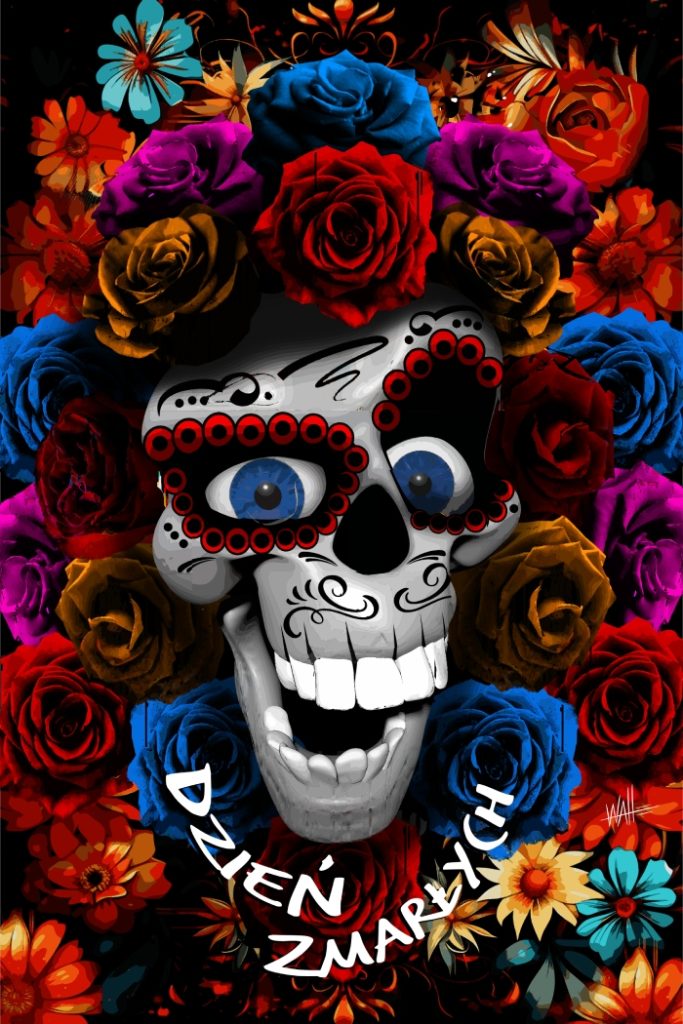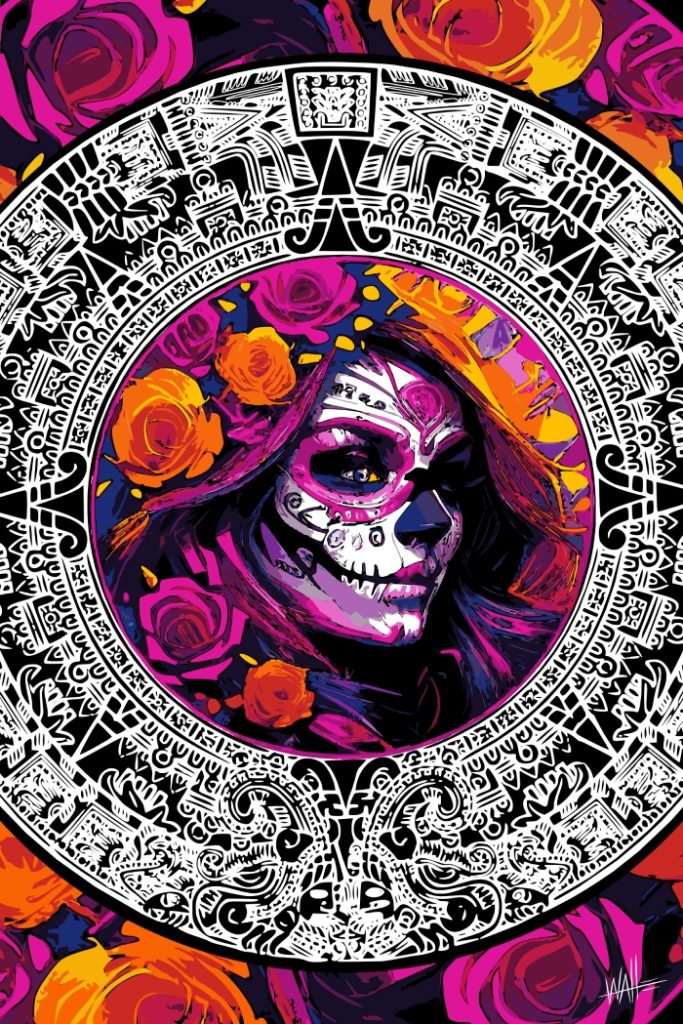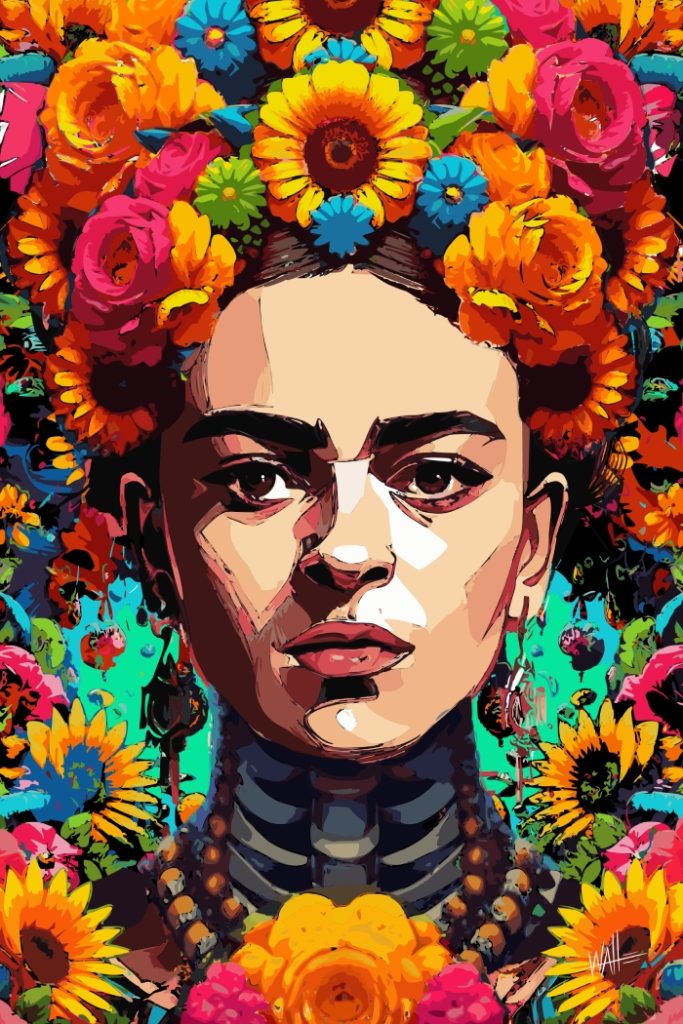
Frida Kahlo and the Day of the Dead: Art, Pain, and Celebration
Frida Kahlo is a cultural icon of Mexico and a figure deeply connected to Mexican identity and culture. Although Frida isn’t directly related to the origin of Day of the Dead, her life, work, and the symbolism surrounding her figure are profoundly tied to the spirit of this celebration. Her art reflects the cycle of life and death, as well as introspection in the face of pain and existence, which are central themes of the Day of the Dead.
Frida’s Relationship with Death
From a young age, Frida confronted pain and death as integral parts of her life. At six, she contracted polio, and in her teenage years, she suffered a severe bus accident that marked her physically and emotionally. These events gave her an intimate and courageous perspective on death, which is reflected in many of her works. Frida’s paintings convey the duality of life and death, physical pain and spiritual vitality, showing a direct connection with the Mexican perception of death as a constant companion of life.
The Day of the Dead in Frida Kahlo’s Art
Frida’s art is filled with references to Mexican culture, and the Day of the Dead is no exception. Her paintings often include skulls, skeletons, and other symbols of death, which she reinterpreted personally and symbolically. Like the Day of the Dead, where the deceased are celebrated with joy and color, Frida did not fear representing death and used it to express her pain and her life full of contrasts.
One piece that reflects this fusion of life, death, and Mexican tradition is her painting “The Dream (The Bed),” where a skeleton rests above Frida’s bed, a visual metaphor for the closeness of death that accompanied her in everyday life.
Symbolism and Joy in Celebrating Death
The Day of the Dead is a vibrant and lively festival that honors the memory of those who have passed on with offerings, altars, and flowers. Frida Kahlo embodied this spirit in her life and art. Just as Day of the Dead embraces death with joy and humor through calaveritas literarias or Catrina figures, Frida celebrated life even on the edge of death.
Frida’s Legacy and the Day of the Dead
Today, Frida Kahlo is a symbol of the Day of the Dead, and her image is often seen on altars and in celebrations throughout Mexico. Her house, the famous Blue House in Coyoacán, becomes a place of pilgrimage during this holiday. Offerings are made in her honor, and she lives on as an emblem of resilience, identity, and love for Mexico.
Frida Kahlo and the Day of the Dead are two expressions of Mexican culture that embrace death without fear, acknowledging its place in the cycle of life. Frida’s image reminds us that death is not an end but a transformation, and in the words of the Mexican people, “as long as someone remembers you, you never die.”
Frida Kahlo i Dzień Zmarłych: Sztuka, Ból i Celebracja
Frida Kahlo to ikona kultury Meksyku i postać ściśle związana z tożsamością i kulturą Meksyku. Choć Frida nie jest bezpośrednio związana z powstaniem Dnia Zmarłych, jej życie, twórczość i symbolika otaczająca jej postać mają głębokie powiązania z duchem tego święta. Jej sztuka odzwierciedla cykl życia i śmierci oraz introspekcję wobec bólu i istnienia, co są kluczowymi tematami Dnia Zmarłych.
Relacja Fridy ze Śmiercią
Od najmłodszych lat Frida konfrontowała się z bólem i śmiercią jako nieodłączną częścią życia. W wieku sześciu lat zachorowała na polio, a w wieku nastoletnim doznała poważnego wypadku autobusowego, który naznaczył ją fizycznie i emocjonalnie. Te wydarzenia nadały jej intymną i odważną perspektywę wobec śmierci, co można dostrzec w wielu jej pracach. Obrazy Fridy przedstawiają dualizm życia i śmierci, fizycznego bólu i duchowej witalności, ukazując bezpośrednie połączenie z meksykańskim postrzeganiem śmierci jako stałej towarzyszki życia.
Dzień Zmarłych w Twórczości Fridy Kahlo
Sztuka Fridy jest pełna odniesień do meksykańskiej kultury, a Dzień Zmarłych nie jest wyjątkiem. Jej obrazy często zawierają czaszki, szkielety i inne symbole śmierci, które reinterpretowała w sposób osobisty i symboliczny. Podobnie jak w Dniu Zmarłych, kiedy zmarli są celebrowani z radością i kolorem, Frida nie bała się przedstawiania śmierci i wykorzystywała ją, by wyrazić swój ból i swoje życie pełne kontrastów.
Jednym z obrazów, które najlepiej odzwierciedlają tę fuzję życia, śmierci i meksykańskiej tradycji, jest „Sen (Łóżko)”, gdzie nad łóżkiem Fridy widnieje szkielet – wizualna metafora bliskości śmierci, która towarzyszyła jej w codziennym życiu.
Symbolika i Radość w Świętowaniu Śmierci
Dzień Zmarłych to kolorowe i pełne życia święto, które oddaje hołd pamięci o tych, którzy odeszli, poprzez ofiary, ołtarze i kwiaty. Frida Kahlo ucieleśniała tego ducha w swoim życiu i sztuce. Podobnie jak Dzień Zmarłych, który z radością i humorem obejmuje śmierć poprzez calaveritas literarias czy figurki Catriny, Frida celebrowała życie, nawet na krawędzi śmierci.
Dziedzictwo Fridy i Dzień Zmarłych
Dziś Frida Kahlo jest symbolem Dnia Zmarłych, a jej wizerunek często pojawia się na ołtarzach i podczas obchodów w całym Meksyku. Jej dom, słynny Niebieski Dom w Coyoacán, staje się miejscem pielgrzymek podczas tego święta. Składa się tam ofiary na jej cześć, a ona żyje dalej jako emblemat odporności, tożsamości i miłości do Meksyku.
Frida Kahlo i Dzień Zmarłych to dwa wyrazy meksykańskiej kultury, które obejmują śmierć bez lęku, uznając jej miejsce w cyklu życia. Postać Fridy przypomina, że śmierć nie jest końcem, ale przemianą, a jak mówi naród meksykański: „dopóki ktoś cię pamięta, nigdy nie umierasz.”

